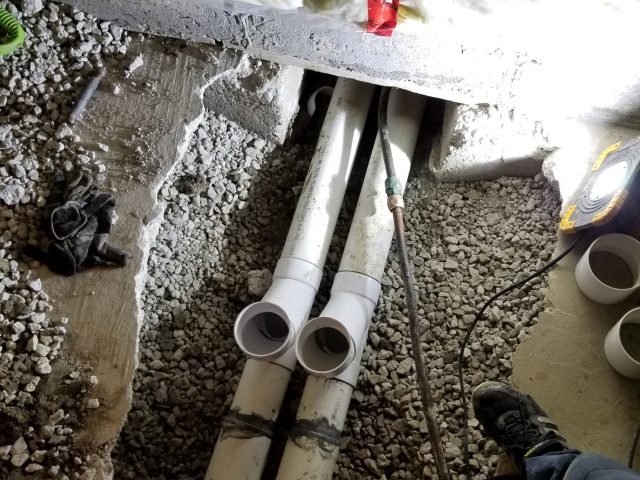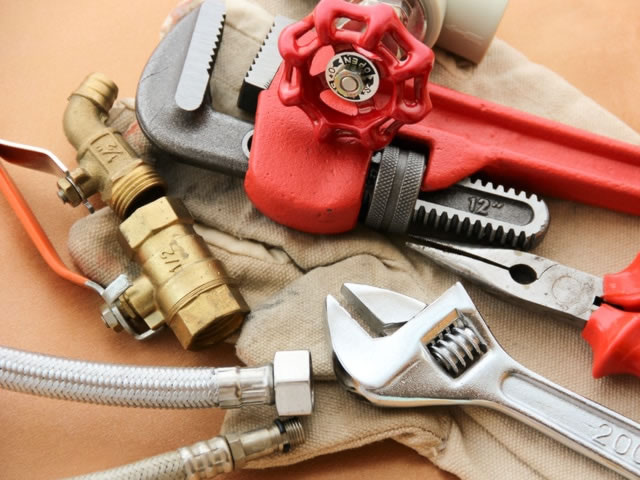When it comes to home improvements, upgrading your bathroom plumbing is one of the most impactful projects you can undertake. Whether you’re remodeling an outdated bathroom, addressing persistent plumbing issues, or enhancing your home’s efficiency, upgrading the plumbing can make a significant difference. But before diving into the project, there are several crucial factors to consider. This guide will help you navigate the key considerations when upgrading your bathroom plumbing, from cost to design, and help you ensure the process goes smoothly.
1. Evaluate the Existing Plumbing System
Before making any decisions, assess your current plumbing system to determine what needs to be upgraded. If you’re working with old pipes or have frequent issues such as leaks, clogs, or low water pressure, it’s a clear sign that an upgrade is needed. Common issues in older plumbing systems include galvanized steel pipes, which corrode over time, and outdated fixtures that no longer function as efficiently as newer models.
Consider calling in a professional plumber to evaluate the condition of your pipes, water heater, and any other components of the system. A plumber will be able to provide a thorough inspection, recommend the best course of action, and estimate the potential costs of upgrading or replacing parts of the system.
2. Budgeting for the Upgrade
Upgrading your bathroom plumbing can range from a simple faucet replacement to a full re-piping of your bathroom. It’s essential to set a realistic budget before beginning your project to avoid unexpected costs along the way. The cost of a plumbing upgrade can vary greatly depending on the complexity of the work, the type of materials used, and whether you’re upgrading just one fixture or doing an entire overhaul.
Basic upgrades, such as replacing faucets or showerheads, can be relatively affordable, while more complex jobs like re-piping or moving pipes around for a new layout can be much more expensive. Don’t forget to account for labor costs, permits (if necessary), and the cost of any new fixtures you want to install.
If you’re on a tight budget, prioritize essential upgrades that will improve the function and efficiency of your plumbing system, such as installing a low-flow showerhead or replacing old pipes that are prone to leaks. For more expert advice and plumbing services, visit hi-techplumbingandair.com/plumbing-lake-worth/.
3. Choose the Right Materials
Selecting the right materials for your plumbing upgrade is a critical decision that affects both the cost and the longevity of your system. There are a variety of materials available for bathroom plumbing, each with its own pros and cons.
- Copper Pipes: Copper is a classic plumbing material known for its durability and resistance to corrosion. While copper pipes are more expensive than plastic alternatives, they can last for several decades when properly maintained.
- PVC Pipes: Polyvinyl chloride (PVC) pipes are lightweight, inexpensive, and resistant to corrosion. PVC is commonly used for drain lines but is not suitable for hot water lines. It’s an excellent choice for budget-conscious homeowners who need to replace drainpipes or install new ones.
- PEX Pipes: Cross-linked polyethylene (PEX) is a flexible plastic pipe that is easy to install and less prone to leaking than other materials. It’s a popular choice for both residential and commercial plumbing due to its flexibility, ease of installation, and resistance to freezing. It can be used for both hot and cold water lines.
- Galvanized Steel: This material was commonly used in plumbing systems in the past but is no longer recommended due to its tendency to corrode and cause water quality issues. If your home has galvanized steel pipes, it’s wise to replace them with more modern materials like PEX or copper.
The best material for your bathroom plumbing depends on your specific needs, the climate in your area, and your budget. Consult with a plumber to determine which material will be most effective for your upgrade.
4. Consider Water Efficiency and Sustainability
In today’s environmentally-conscious world, many homeowners are opting for water-efficient plumbing upgrades to help conserve water and reduce utility bills. Water-efficient fixtures and appliances are designed to use less water without sacrificing performance.
- Low-flow Fixtures: Installing low-flow toilets, faucets, and showerheads is one of the easiest ways to reduce water consumption in the bathroom. These fixtures use significantly less water than traditional models while still offering excellent performance. Many modern low-flow fixtures are designed to be stylish and efficient, making them a great choice for homeowners who want to save water without compromising on design.
- Tankless Water Heaters: Traditional water heaters with tanks store a large volume of water, heating it constantly to maintain a steady temperature. A tankless water heater, on the other hand, heats water only when it is needed, offering significant energy savings over time. These systems are compact, efficient, and can help reduce energy costs.
- Water Filtration: Upgrading your bathroom plumbing is also a great opportunity to consider installing a water filtration system. A high-quality filtration system can improve the taste and quality of your water while also protecting your pipes and fixtures from mineral buildup.
By choosing water-efficient products, you can reduce your environmental impact and potentially save money on water and energy bills.

5. Plan for Future Needs
When upgrading your bathroom plumbing, it’s important to plan for the future. Think about potential changes in your home, such as adding more bathrooms, installing a Jacuzzi or whirlpool tub, or making other modifications that could affect your plumbing needs.
If you plan on expanding your family or adding additional features to your bathroom, you may need to upgrade your water supply and drainage system to handle the increased demand. For instance, if you’re installing a larger bathtub or a rain shower, you may need to increase the size of your pipes or adjust the water pressure to accommodate the higher volume of water.
Upgrading your plumbing with future needs in mind can help you avoid costly repairs or replacements down the road.
6. Hire a Qualified Professional
While some minor plumbing upgrades, such as replacing faucets or installing a new showerhead, can be DIY projects, more complex tasks such as re-piping, moving plumbing lines, or installing a new water heater should be handled by a professional plumber. An experienced plumber has the knowledge and tools to perform the job safely and efficiently, ensuring that everything is up to code and functioning properly.
Hiring a licensed and insured plumber can help protect you from potential liability and ensure that your plumbing system is up to current codes and standards. It’s also worth checking reviews and getting recommendations from friends or family to ensure you’re hiring a reputable professional.
7. Check Local Codes and Permits
Before starting your plumbing upgrade, be sure to check with your local government or building authority to determine if you need any permits or need to comply with local plumbing codes. Depending on the scope of your project, certain plumbing upgrades may require inspections or permits to ensure they meet safety standards.
Failure to obtain the necessary permits could result in fines, delays, or having to redo the work to meet code. Working with a professional plumber can help ensure that your project is compliant with all local regulations.
Conclusion
Upgrading your bathroom plumbing is an investment that can improve the functionality, efficiency, and comfort of your bathroom for years to come. By evaluating your current plumbing system, setting a budget, selecting the right materials, and considering long-term needs, you can make informed decisions that will enhance your bathroom and your home’s plumbing system. With careful planning and the right professional help, your bathroom upgrade will be a successful and worthwhile project.

